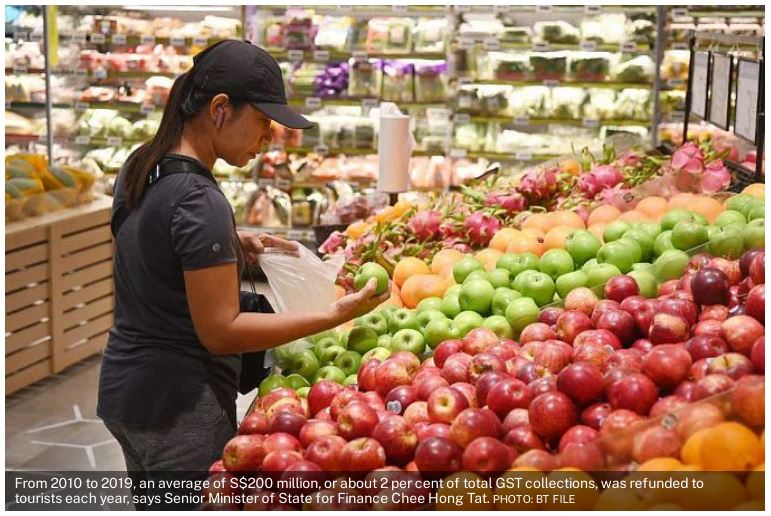About 50% of net GST revenue in 2018 and 2019 paid by tourists, foreigners residing in Singapore
TOURISTS and foreigners residing in Singapore accounted for about half of net Goods and Services Tax (GST) revenue in 2018 and 2019, said Chee Hong Tat, Senior Minister of State for Finance in Parliament on Tuesday (Nov 8). Meanwhile, the top 20 per cent of resident households accounted for close to 20 per cent.
Chee added that data from 2020 and 2021 was omitted “as it was not representative of general consumption patterns” due to the pandemic.
The Ministry of Finance (MOF) estimated that, netting off refunds from the Tourism Refund Scheme and GST vouchers of over S$1 billion that are provided annually to Singaporean households, the net annual GST from households and individuals was about S$5.7 billion in 2018 and 2019.
Before accounting for annual GST vouchers, households and individuals paid about S$6.8 billion in GST annually in the two years.
Chee was responding to questions by Workers’ Party Member of Parliament Jamus Lim (Sengkang GRC), who asked about the proportions of the GST paid by different groups in Singapore, as well as the value of refunds to tourists under the Tourism Refund Scheme.
From 2010 to 2019, an average of S$200 million, or about 2 per cent of total GST collections, was refunded to tourists each year, Chee said.
“The refunds in 2020 and 2021 were much lower, averaging around S$22 million per year, due to travel restrictions associated with Covid-19,” he added.
Addressing Prof Lim’s supplementary question about whether the “50 per cent (of net annual GST) drawn from foreigners and non-residents may actually be worth the additional pain that our middle class will need to endure”, Chee reiterated that “the bulk” of net GST collected is borne by tourists and foreigners residing in Singapore and the top 20 per cent of households.
“So what this means is that the remaining 30 per cent is spread over the rest of the 80 per cent of households and individuals,” he said, adding that support – including from two previously-announced S$1.5 billion support packages and special payment in December – is available to middle income households.
Prof Lim also asked about whether the MOF has “any estimates of the relative share of GST that will be paid for explicitly by foreign consumers versus local businesses,” noting that higher GST charges may result in local businesses bearing the burden of lower demand and profits.
Chee responded: “What I shared earlier: the figures, including the percentages – those were not based on theoretical analysis, but actually based on actual data.”
Source: https://www.businesstimes.com.sg/government-economy/about-50-of-net-gst-revenue-in-2018-and-2019-paid-by-tourists-foreigners-residing


 English
English




